Dendros
Dendros is a unique approach to visualizing oral history as a landscape of collective memory.
We developed an interactive installation to parse and explore the Computer History Museum’s archive of interviews with pioneers in computing. The collection spans 120 years of stories from over 800 individuals, from Jean Bartick, one of the first programmers of ENIAC, to Robert Metcalfe, the co-founder of Ethernet, to DEVO frontman and keyboardist Mark Mothersbaugh.
This project was sparked by an extended research grant to build better tools for people to work with large document sets — so we were especially interested in meaningful ways to parse the transcripts and bring the personal narratives to life, as well as finding useful points of comparison and analysis.
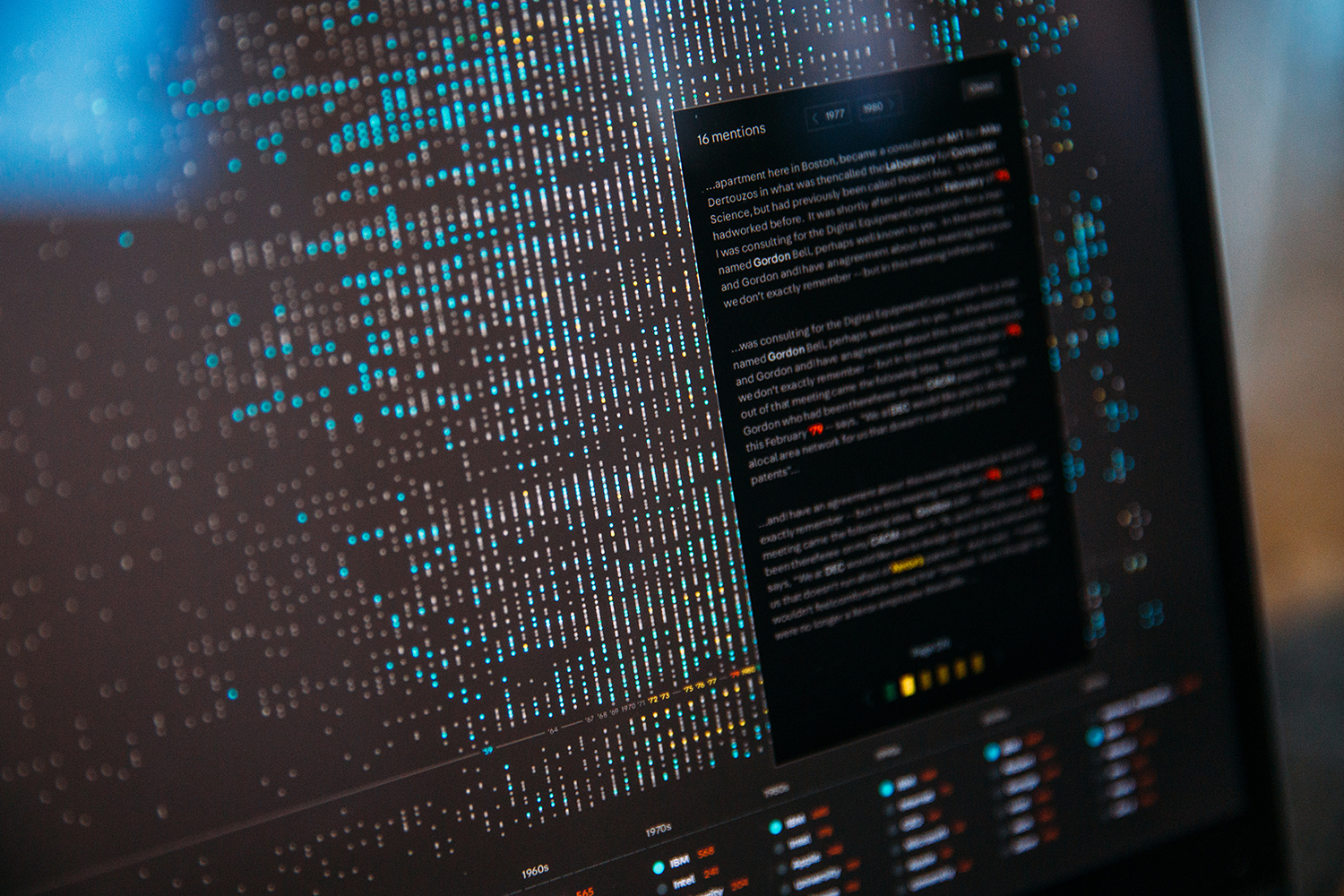
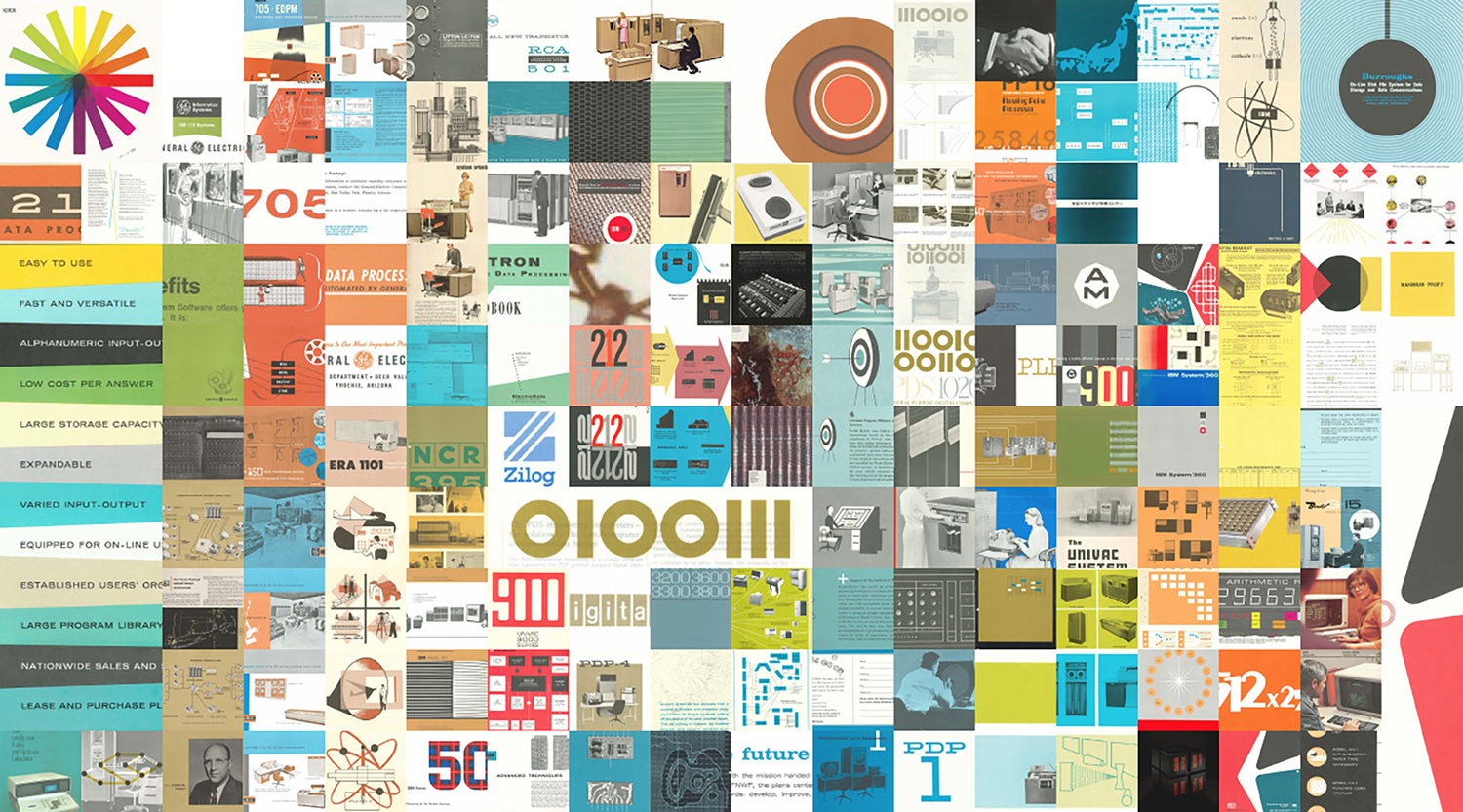
In our initial exploration, we applied modeling techniques to see if identifying key topics and terms might reveal the individuality of each interview’s story. But the biographical, episodic nature of these interviews is fundamentally rooted in time and was much better suited to entity and date extraction.
Through iteration, we found that an approach combining regular expressions and natural language processing provided us with a more nuanced way to pull forward different kinds of dates, events and time spans: from the specificity of “March 6, 1952” to the looseness of “late ’67” or a casual reference to “the ’80s and ’90s”, and the resulting timelines reveal the unique topography of each interview.
This method became our guiding principle for placing the interviews in context. Like dendrochronology, the science of dating the growth rings of an individual tree to extrapolate the surrounding ecosystem over time — our focus here is how the threads of individuals’ memories layer together to recreate the experience of a shared history.
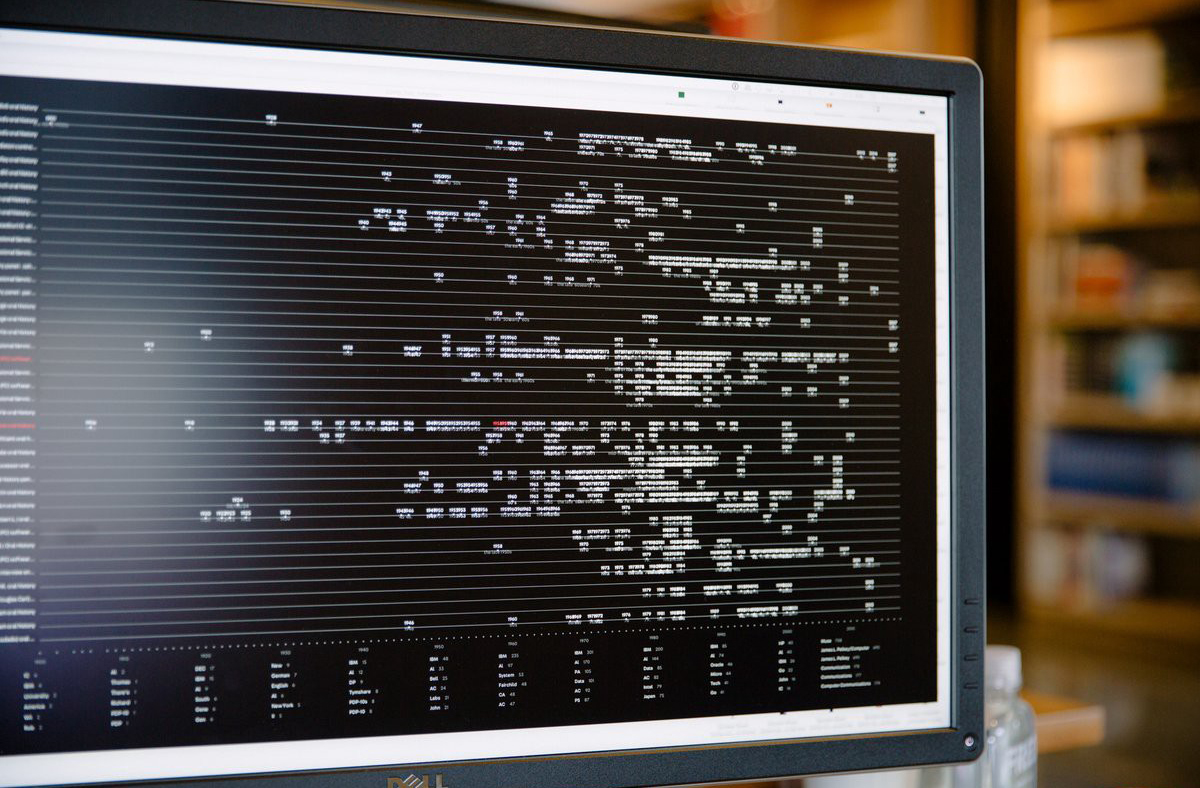
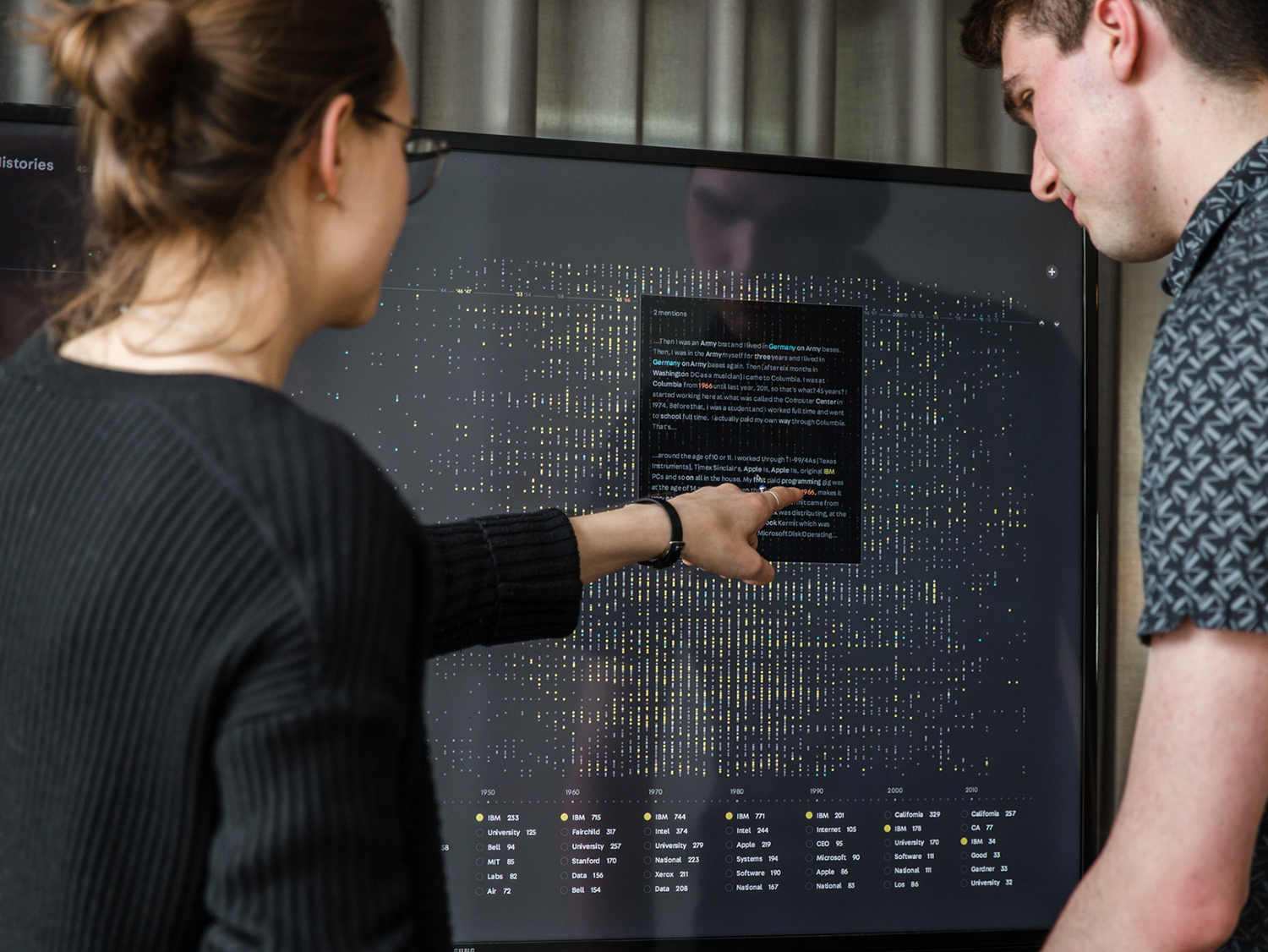
Using this approach, Dendros visualizes a rich landscape of evolving technologies, research and experimentation, the rise and fall of companies and industries, and explosions of cultural change.
In the interactive installation, users can apply those terms to filter the timelines and delve into the interviews for the full context of how those ideas are mentioned in conversation.
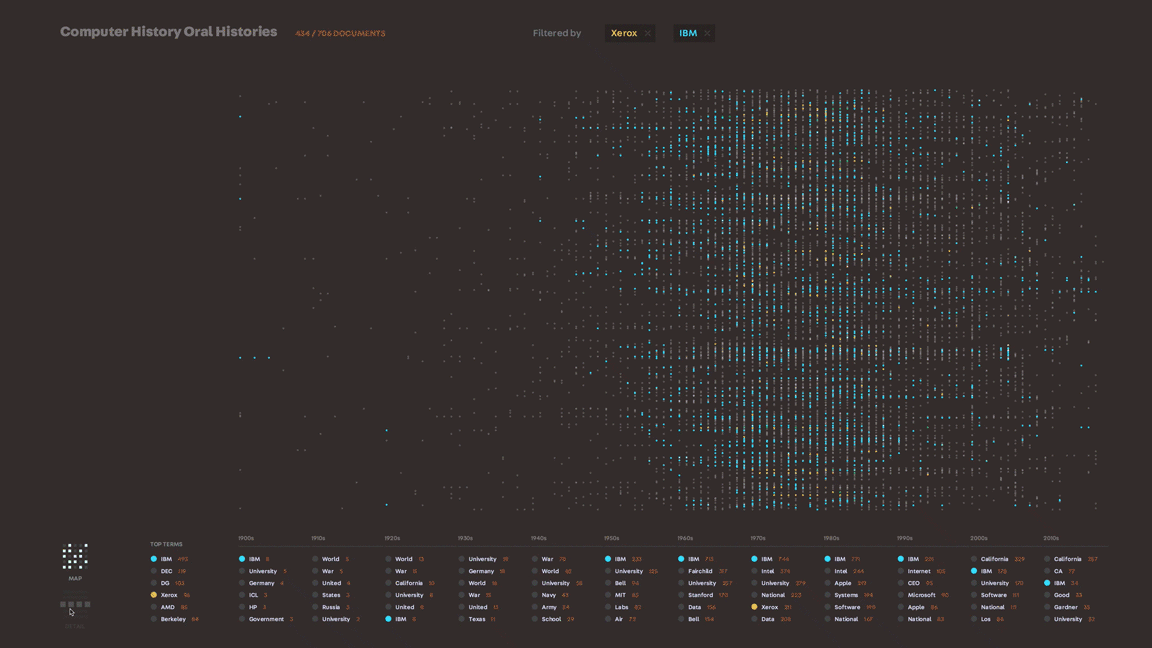
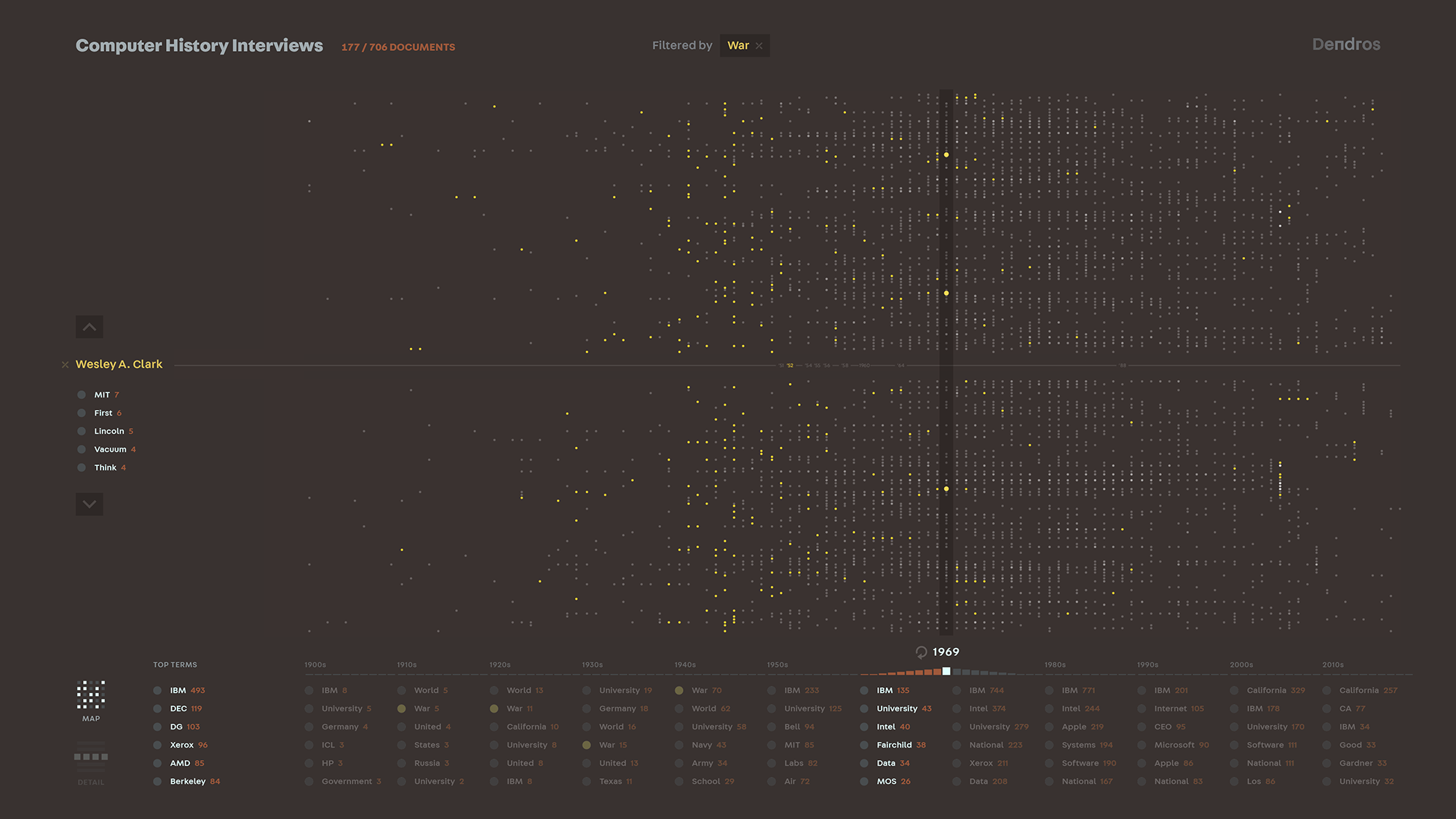
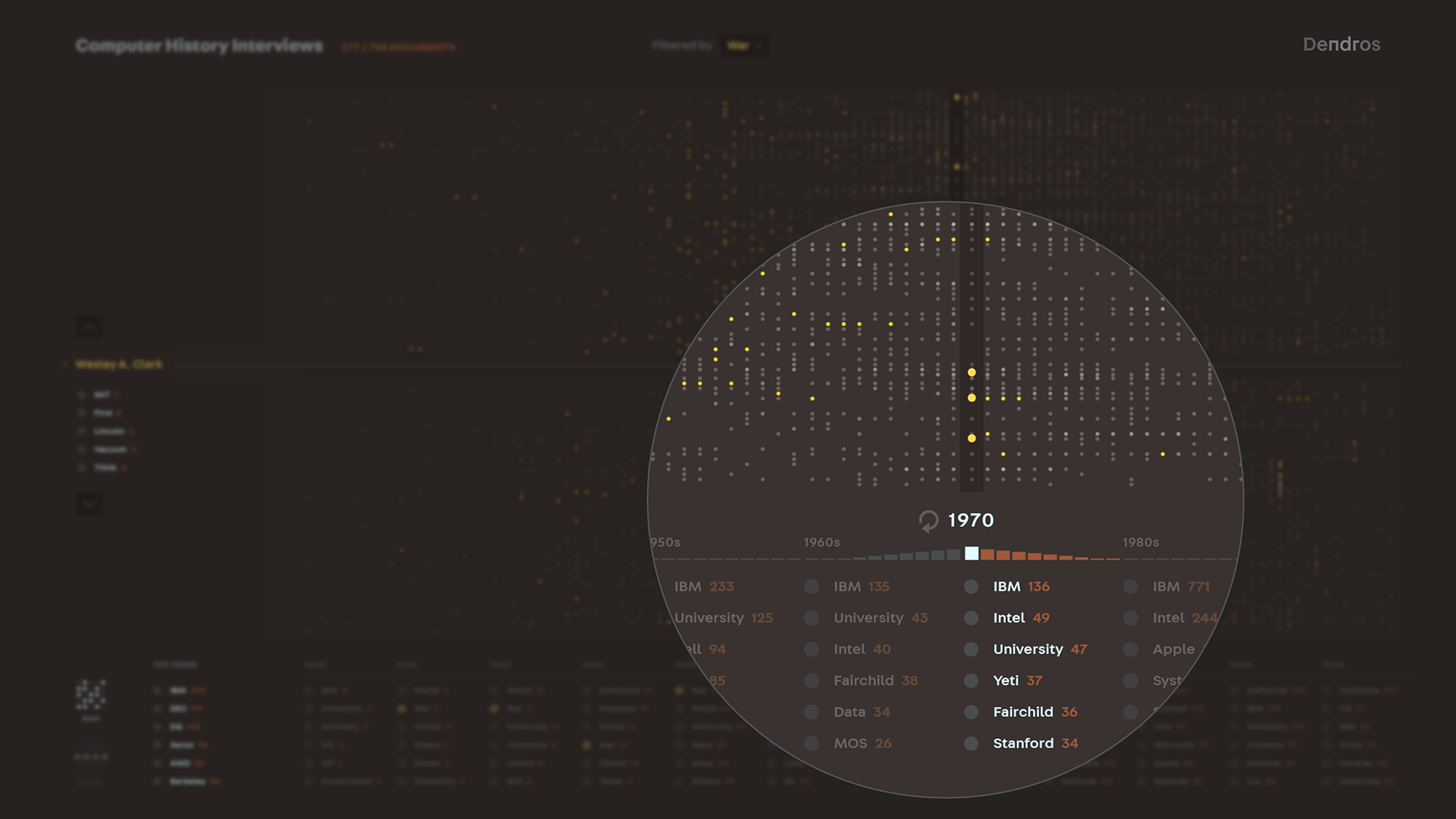
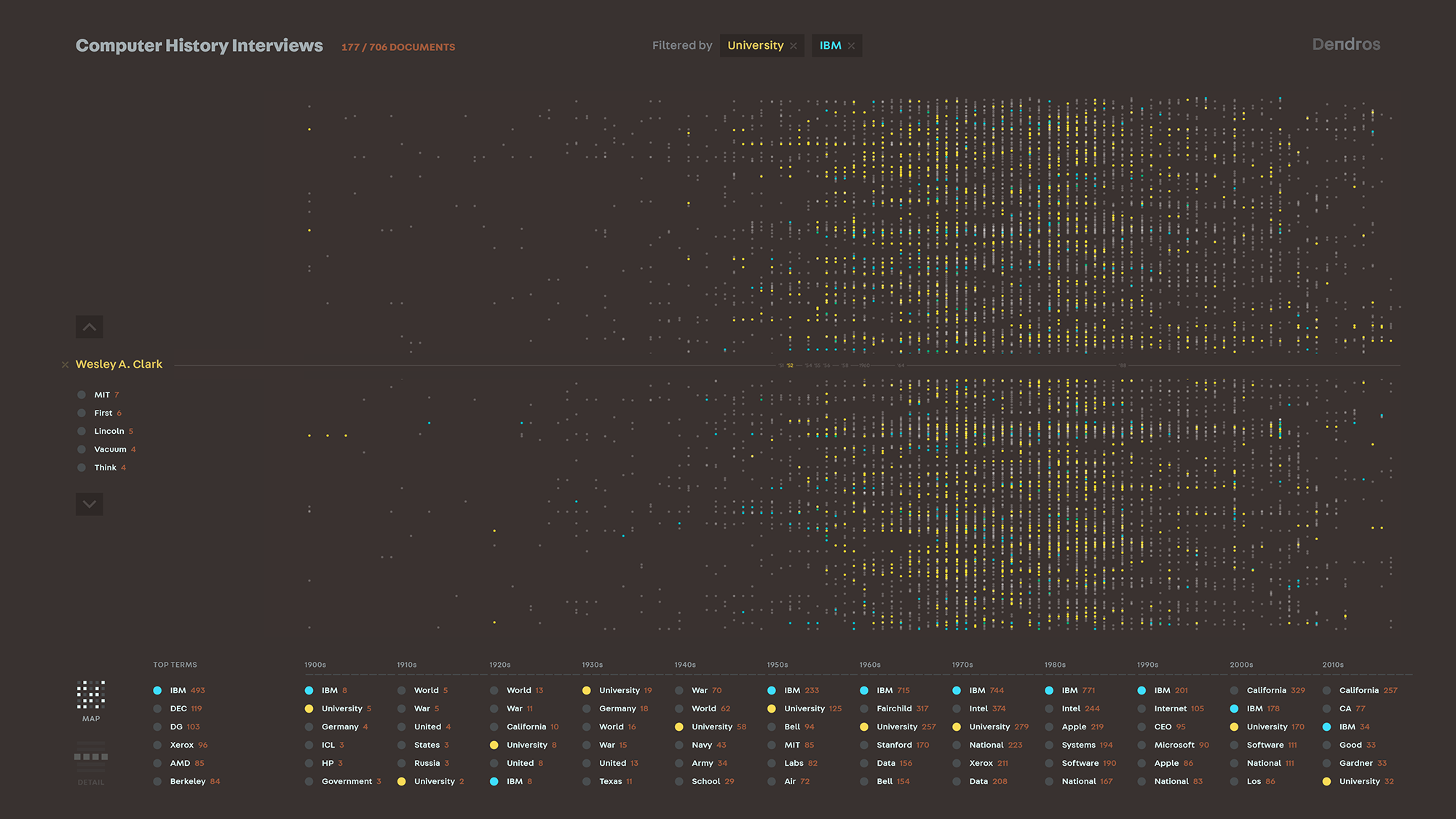
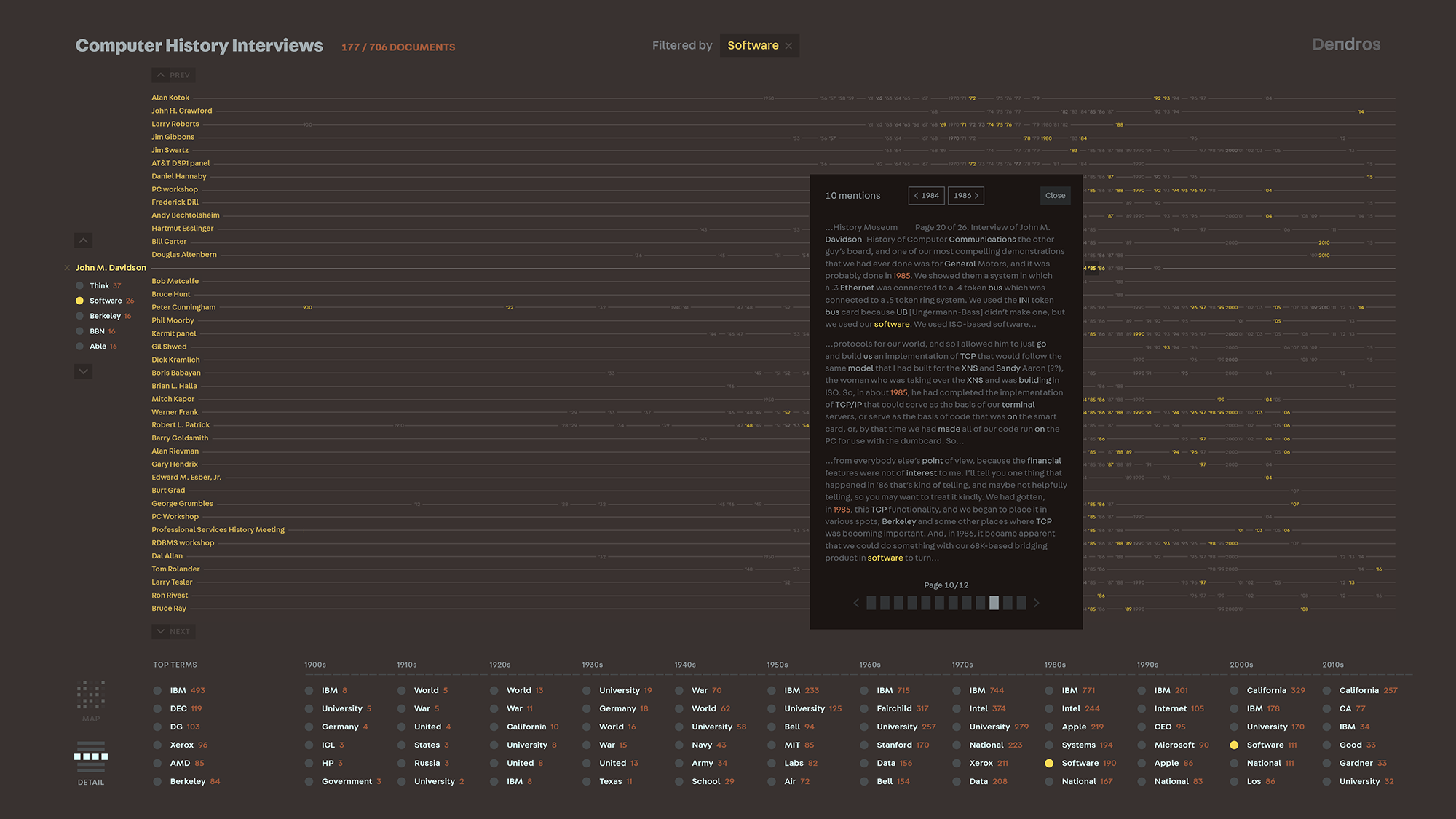
I also created a poster representing the full set of interviews, visualized as a tapestry of people’s memories of distinct events and blurrier, looser spans of time.
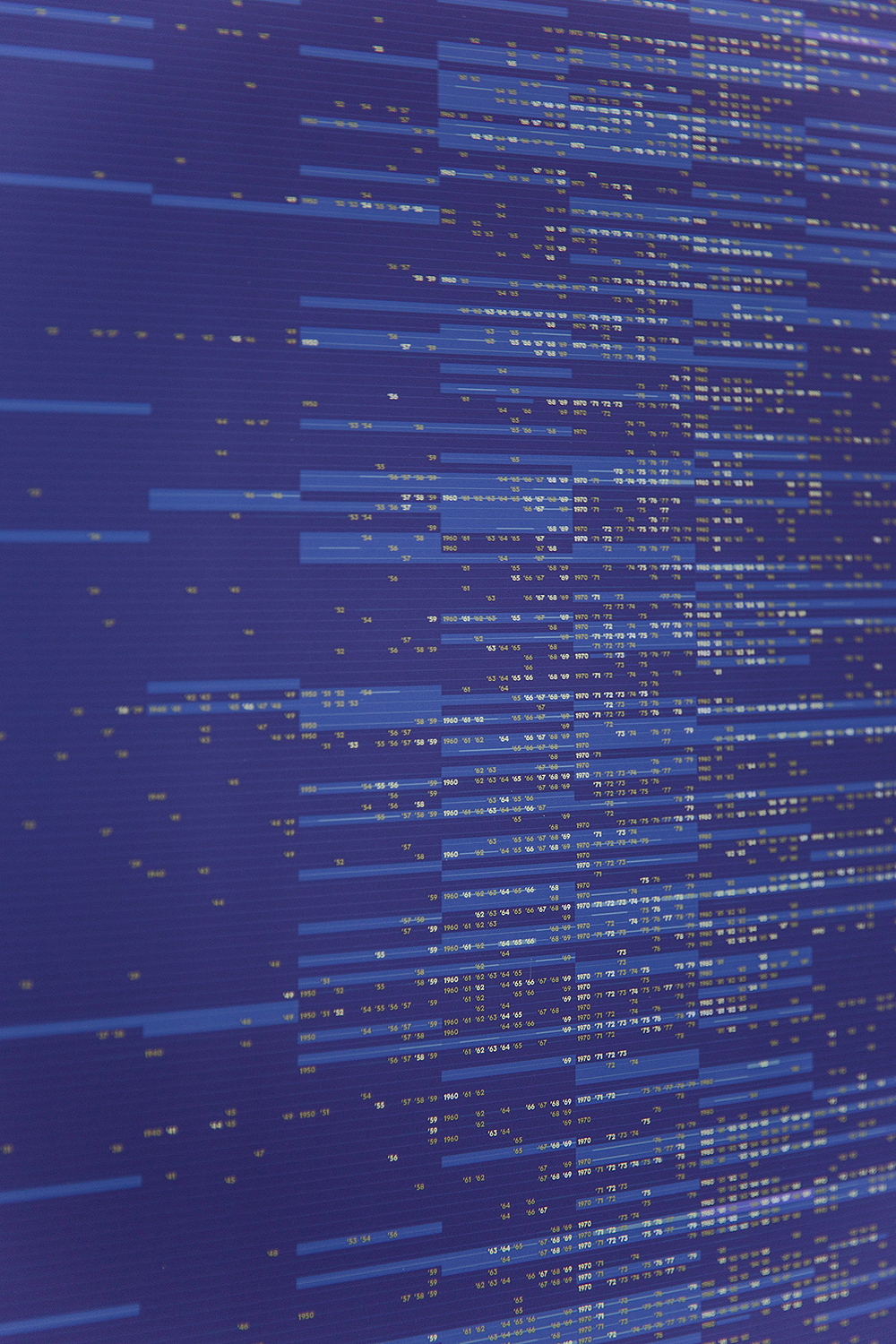

As in the interactive tool, the bottom of the poster displays the defining terms or entities that are mentioned most frequently in the context of each decade.
These words suggest overarching forces and pressures that have shaped the history of computing: the pivotal role of both World Wars and Cold War-era competition between the U.S. and the Soviet Union, the outsized presence of a few universities and influential companies like IBM, and California’s gradual emergence as the epicenter of the field, among other themes.

